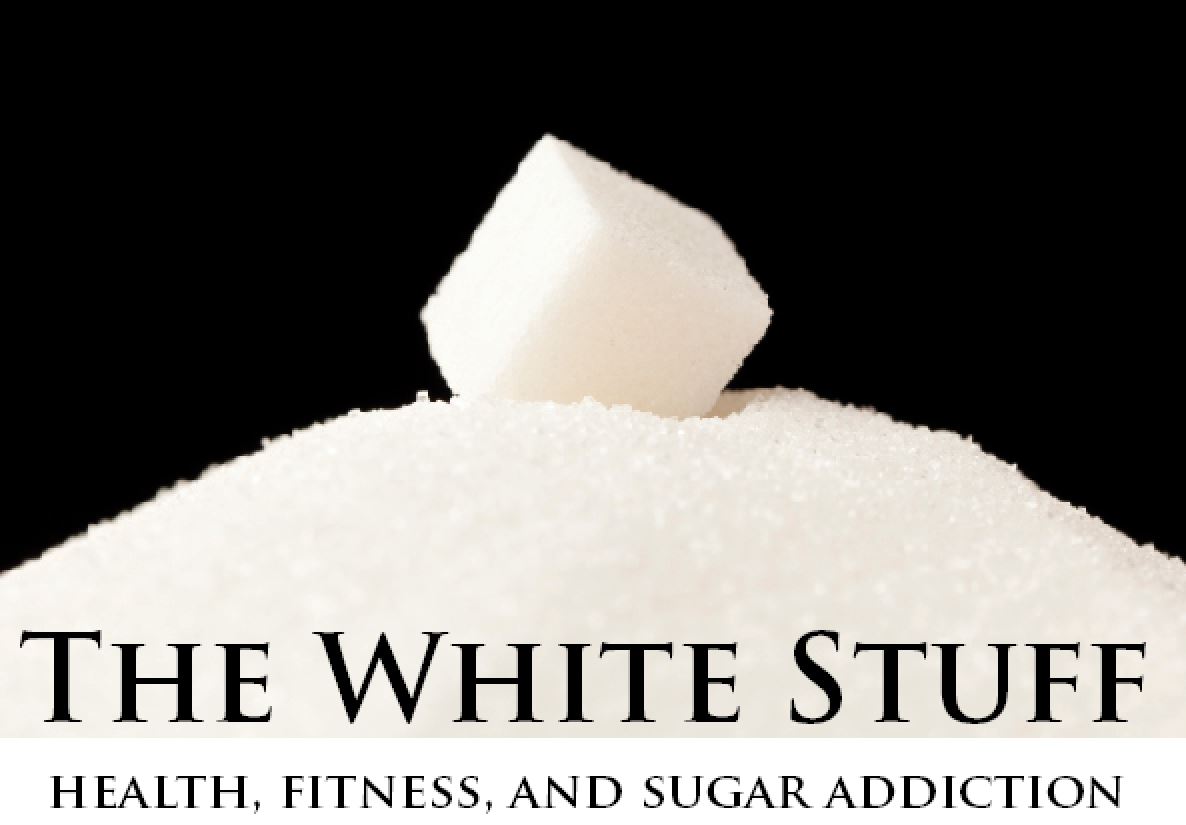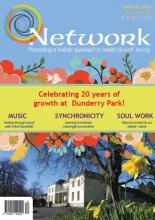The White Stuff - health, fitness, and sugar addiction

A pioneer in endurance training and biofeedback, and an internationally recognized expert on health and nutrition, Dr. Phil Maffetone has 40 years’ experience working with professional athletes as Olympic medalists, as well as with people from all walks of life.
Listening to your heart
Phil has long advocated a holistic approach to training and performance, something that seemed pretty leftfield next to the ‘no pain, no gain’ mindset that has dominated sports. ‘The idea of a heart monitor was originally because I wanted a bio-feedback device that allowed people to get in touch with their bodies rather than the herd mentality’ says Phil. ‘The use of biofeedback was very logical, I was familiar with it and it was a very important part of my practice. What I found was that there were very few people who could tap into that intuition in a natural way. I have seen it in athletes here and there, but for the most part I think the society has influenced the athletes in a significant way, and as a result most of them train too hard, for too long a period, and even when they get hurt they keep going’.
People – athletes or not – often keep pushing through pain because that is what they feel like they are supposed to do. Phil’s big idea to train at a much slower pace – that is to stay in the aerobic zone and build endurance - seemed counter-intuitive to a lot of people. And that may be down to the philosophy that was dominant when running became popular some decades ago. ‘Being in track and field in the 60s, and being around when the running boom hit in the 70s, a lot track and field athletes who were retiring suddenly saw a great opportunity to coach in this great blossoming endurance market. They came from track and field to endurance and they brought with them their work ethic. So you run too fast too often, even faster than race pace during track workouts. It is illogical on many levels but that is what happened. When I first started working with athletes and I saw the injuries that they were getting, I was looking at their diet and looking at stress and muscle balance’.
‘If there was a physical injury, OK we fix that – that is easy to do. And they would go and train, but a few weeks they would be back and either that injury had occurred or a new injury had popped up. After a while I realised that I was missing something here, because this is not what endurance sports is supposed to be. And when I talked to them about training I realised that the training was often the most stressful component of their lifestyle. So I was forced to participate in the training process. I didn’t call myself a coach at the beginning but what I did was I advised them on their coaching’. The advice that Phil offered was based on looking at the body system as a whole, rather than trying to hit a target of running a certain amount of miles each week, he would encourage athletes to introduce a little fluidity to their schedule, to essentially go easy on the parts that needed to heal.
‘And I noticed that the difference was night and day. It was incredible and it happened right away. It did not take very long for me to realise that this was the right way to go. Even if the athletes themselves were usually still a little hesitant. They were concerned that they would lose what they had trained hard to achieve. At that time, I didn’t have any reputation but what I had was the ability to correct a physical injury, and when I did that it always got their attention’.
Getting to the root causes
Perhaps it is the cultural expectation to always work hard and be full of energy that has seen people adopt a catastrophic model of consumption. On his website, Phil regularly writes about the problems that we have with sugar in our diet: ‘the white stuff may be the most common and primary addiction’ he says, ‘a cycle that starts with a stressed brain, triggering further unhealthy eating. Breaking this vicious cycle starts with understanding it’.
‘When we are working with another human being it is important to look beyond the signs and symptoms’ Phil explains, ‘when I am talking to a person and they go bouncing around from one complaint to another – they are all very important – but these are all secondary problems that are happening downstream. What we have in the body is a hierarchy. So when we have a problem in one area, that will often trigger a problem in another area, and that secondary problem will often go on to cause a problem on a third level. Over time that can become a big mess and you have to assess and untangle that complicated web of seemingly bizarre signs and symbols. But you should be able to assess someone and see not only the symptoms, but see the logic of how the body has tried to adapt to the problems they have’.
‘What has been obvious over the years is that the problem with sugar addiction. That problem is often a primary one, it occurs early on and it triggers other problems that cascade on and on. So rather than treat symptoms – which we never want to do unless it is an emergency – we have to treat the cause. And if the cause is that you are eating too much sugar and you have gotten addicted to it along the way, then that is what we need to address’.
‘I have seen a lot of miracles in practice and many of them are associated with giving up sugar and refined carbohydrates. When we talk about sugar we should include refined carbohydrates like white flour because it turns to sugar immediately when we eat it. And those carbohydrate foods – processed flours and processed corns – those are worse than sugar because they produce more insulin than the same amount of white sugar. It is all the same terrible, unhealthy processed and junk food that has become a staple in our society’.
Part of what makes sugar addiction such a tough problem to address is the fact that we are surrounded by it. ‘The companies that make these foods for decades have been spending a lot of money promoting them to the entire population – children, mothers, athletes, the elderly – they are promoted to restaurants and shops across the board. This food is cheap, it has a long shelf life, and it tastes good. It is easy to make the point that sugar is where our energy comes from. So it is one thing after another and it is an easy sell’.
Breaking the cycle of addiction
Acknowledging that we are in a culture that is addicted to sugar is one step, but it is up to us to do something about it says Phil. ‘Obviously sugar is addictive and finally today scientists and clinicians are having an easier time using that word, because when you start looking at the brain and how the brain is responding then you are seeing the same kind of response that happens when a person takes cocaine, for example’.
‘The easiest recommendation is to stop eating refined carbohydrates. Which essentially means to stop eating junk food. So no more added sugars, no more breads and cereals… Every animal that is not in captivity on earth knows how to eat, except for humans. We just reach for something, and that is probably something that we have learned as children’.
But kicking the habit can be tough, because, looking through a holistic lens, we can see that sugar plays a much bigger role than just being a dietary component. Just like the ‘no pain, no gain’ mindset ultimately encouraged a culture of unhealthy training, an ‘always on’ mindset can encourage a pattern of unhealthy eating.
In a recent piece on sugar addiction, Phil reflects on this: ‘Stress is almost always a key factor. It comes in many forms and often plays a key role in instigating the addiction cycle’. Stress can take physical (such as muscle and joint problems, excess sitting, poor posture or gait), biochemical (including hormone imbalance, digestive problems, and drug problems), and mental-emotional (this can be seen in poor personal relationships with people both personally and professionally, and may be partially due to physical pain, or lack of understanding about one’s health, such as how best to eat or work out, and even understanding addiction).
‘The accumulation of stress adversely affects the brain, impairing metabolism, and causing abnormal blood sugar and insulin levels, leading to carbohydrate cravings’ explains Phil, ‘One common reward-seeking behaviour is eating refined carbohydrates – aka, sugar. Eating these foods affects the brain’s reward center. Addiction follows, and if one does not address this key factor, the vicious cycle continues’.
There are two tools that Phil recommends to combat sugar addiction. The first lies in a detailed exploration of the stresses we have in our life. Like the injured athlete, whose core injury causes the body to try to adapt, and create further problems – we cannot just push through and hope for the best. Taking the time to go slow and become aware of our stresses is essential. And the key to this according to Phil is – writing it all down. ‘Being more aware of your physical, bio-chemical and mental stress is a big step for improving health… reducing or eliminating unnecessary stress from your life will give your body a better chance to cope with other stresses you may not be able to change right now’.
The second tool is taking a test period to change up our diets and become more intuitively attuned to the best eating habits for us as individuals. Phil recommends a two-week test that cuts out carbohydrates: ‘Of all the clinical tools I developed and used for assessment and therapy through my career, the consistent results from the Two-Week Test surprised me the most: it’s amazing how a person can go from one extreme of poor health to vibrant health in such a short time. It’s simply a matter of removing a major stress factor—refined carbohydrates and excess insulin—in a person’s life and allowing the body to function the way it was originally meant’.
More specific details on understanding stress, and the two-week test can be found in the links to the articles below. Performing well is not something that just professional athletes need to be concerned about, as Phil suggests, the way we eat has an impact on how we function as humans, and ultimately how we relate to our greater society. Reducing the amount of harm we do to ourselves seems like a good place to start. ‘By kicking your addiction to sugar and reducing other stress factors, you will be confronting the root of all addictive processes’ says Phil, ‘which can lead to successfully giving up other bad habits and addictions as well’.
Latest Issue
Upcoming Events
-
17/04/2020 to 26/04/2020
-
18/04/2020
-
23/04/2020
-
15/05/2020 to 23/05/2020
-
16/05/2020 to 17/05/2020
Recent Articles
Article Archive
- November 2011 (2)
- January 2012 (3)
- February 2012 (2)
- March 2012 (2)
- April 2012 (4)
- May 2012 (4)
- June 2012 (1)
- July 2012 (3)
- August 2012 (2)
- October 2012 (2)

